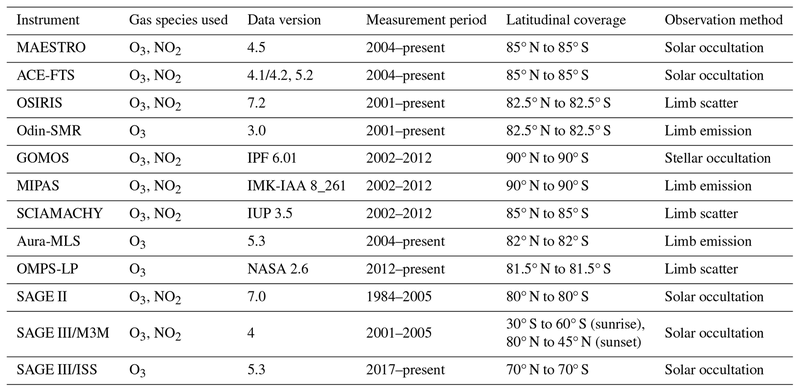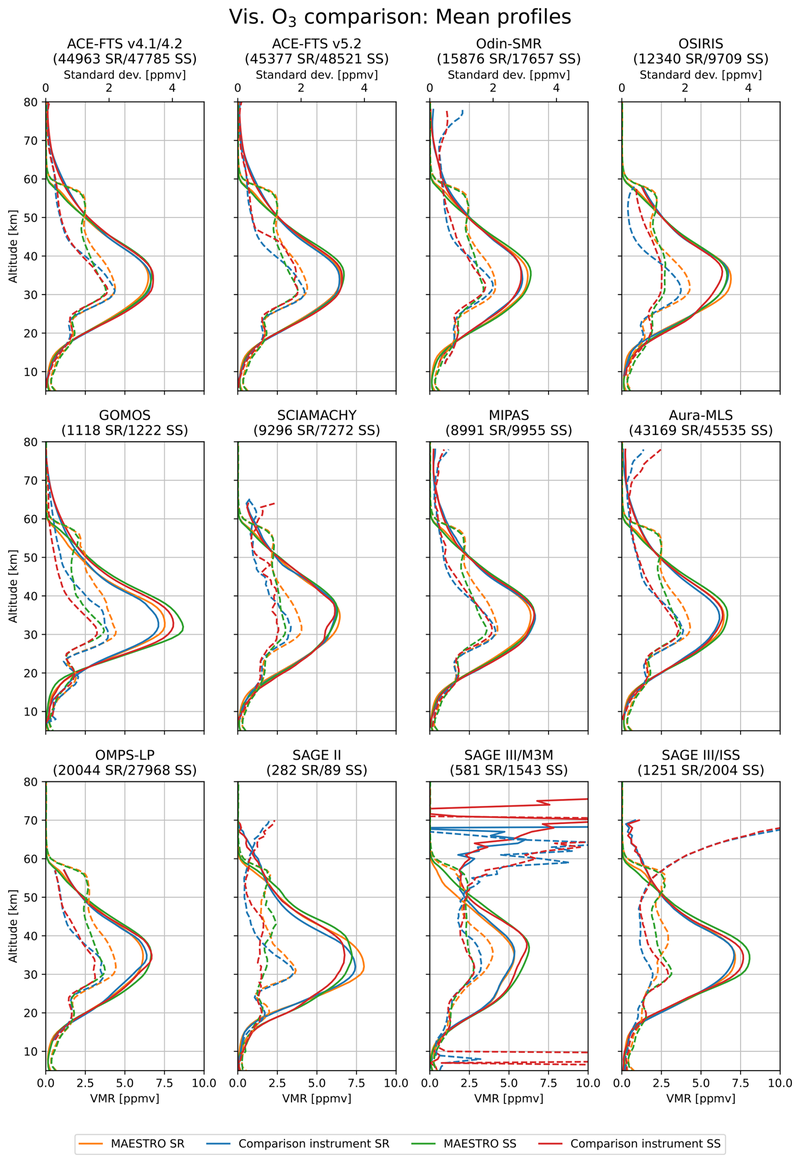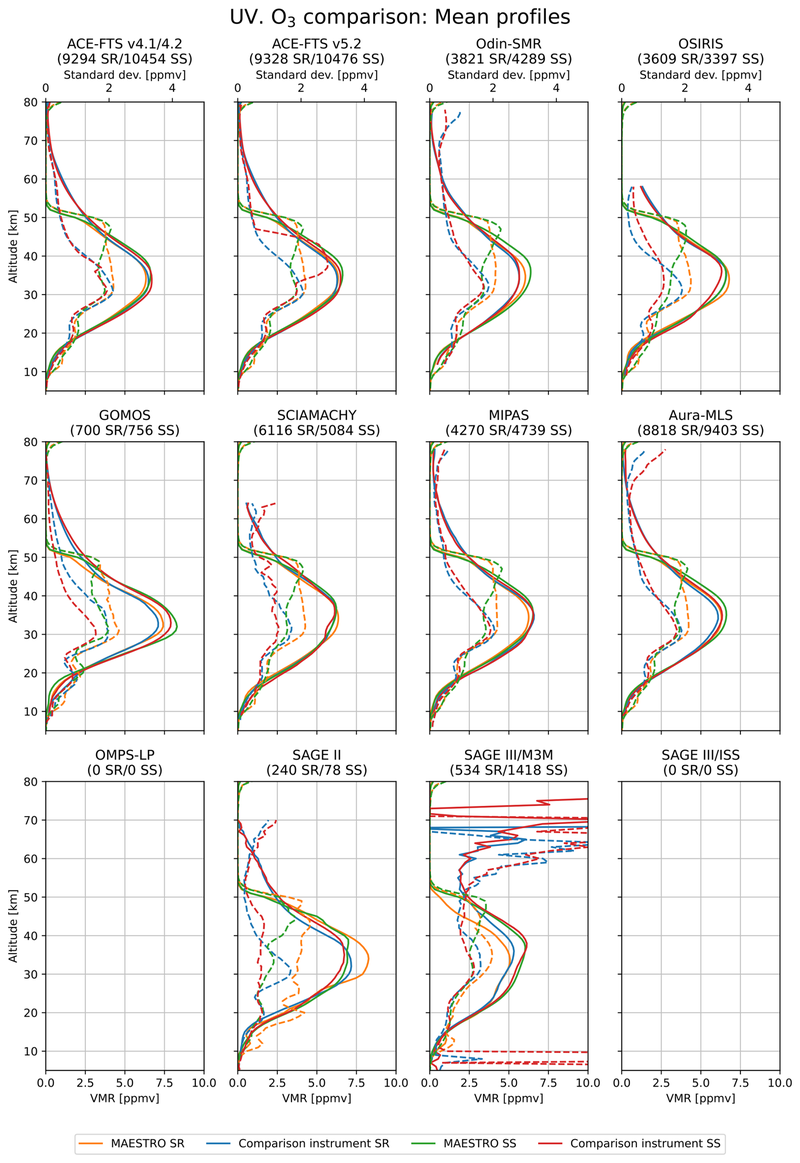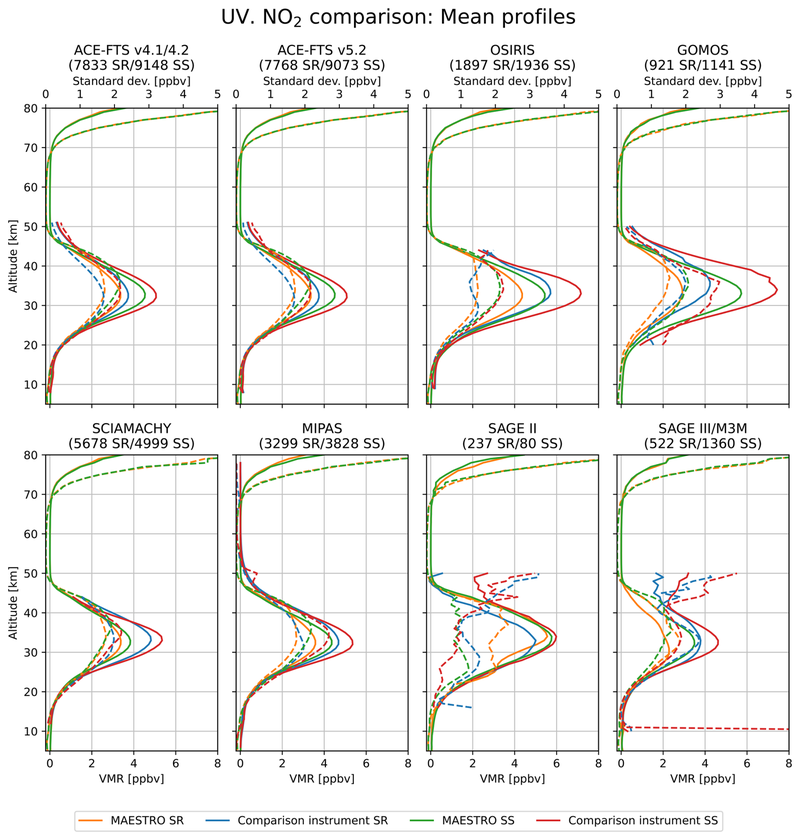The MAESTRO instrument has been measuring solar absorption spectra in the ultraviolet (UV) and visible part of the spectrum for more than 20 years. The UV-channel measurements from MAESTRO are used to retrieve profiles of ozone from the short-wavelength end of the Chappuis band (UV-ozone) and NO2, while measurements made in the visible part of the spectrum are used to retrieve a separate ozone (Vis-ozone) product. In this study, these new version 4.5 MAESTRO ozone and NO2 profile products are compared against coincident (both spatially and temporally) measurements from an ensemble of 11 other satellite limb-viewing instruments. The datasets used in this study are shown in Figure 1.

Figure 1: Summary of the spatial and temporal coverage of the instruments used in this study, along with the trace gas species used here from each, the data version for the products employed, and the measurement technique of each instrument.
The version 4.5 retrieval algorithm represents an improvement from previous versions, with changes including updated pressure and temperature input information, an improved algorithm for high-Sun reference spectrum calculation, improved Rayleigh scattering modelling, and the change to a Twomey–Tikhonov inversion algorithm from a Chahine relaxation technique. Due to the buildup of an unknown contaminant, the UV-ozone and NO2 products are only viable up to June 2009 for NO2 and December 2009 for UV-ozone. The Vis-ozone product nominally spans the entire MAESTRO measurement period, covering February 2004 until December 2023 in this study. Figures 2 through 4 show the comparisons of the mean MAESTRO Vis-ozone, UV-ozone, and NO2 profiles against the ensemble of comparison instruments. Note that there are no coincident measurements between the MAESTRO UV-ozone product and OMPS-LP and SAGE III/ISS, or between the NO2 product and Odin-SMR, Aura-MLS, OMPS-LP and SAGE III/ISS.

Figure 2: Comparison of the mean MAESTRO sunrise (SR) and sunset (SS) Vis-ozone profiles with mean coincident ozone profiles from the comparison instruments. The profiles from the comparison instruments are divided into whether they are coincident with MAESTRO sunrise or sunset measurements. The mean profiles are presented using the lower x-axis scale. The 1σ standard deviations of the profiles are shown as dashed lines using the upper x-axis scale. Under each instrument name is the number of coincident measurement pairs found for the MAESTRO sunrise/sunset measurements.

Figure 3: Same as Figure 2 but for MAESTRO UV-ozone measurements.

Figure 4: Same as Figure 2 but for MAESTRO UV NO2 measurements.
In the stratosphere, the Vis-ozone product was found to possess a small high bias, with stratosphere-averaged relative differences between 2.3 % and 8.2 %, although good agreement with the comparison datasets was found overall. A similar bias, albeit with slightly poorer agreement, is found for the UV-ozone product in the stratosphere, with the average stratospheric agreement between MAESTRO and the other datasets ranging from 2.8 % to 11.9 %. For NO2, general agreement with the comparison datasets is only found in the range from 20 to 40 km. Within this range, MAESTRO is found to have a low bias for NO2, and most of the datasets agree to within 27.2 %, although the average agreement ranges from 8.5 % to 43.4 %.
